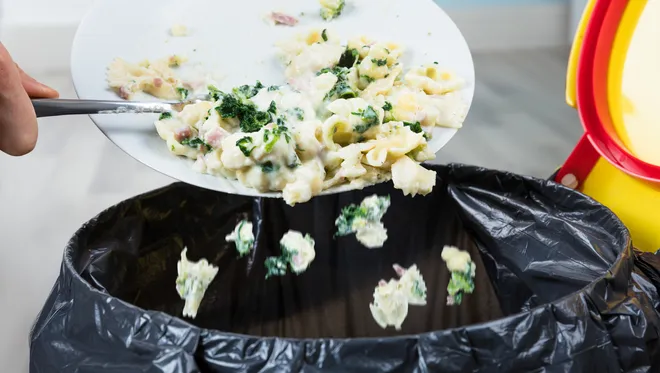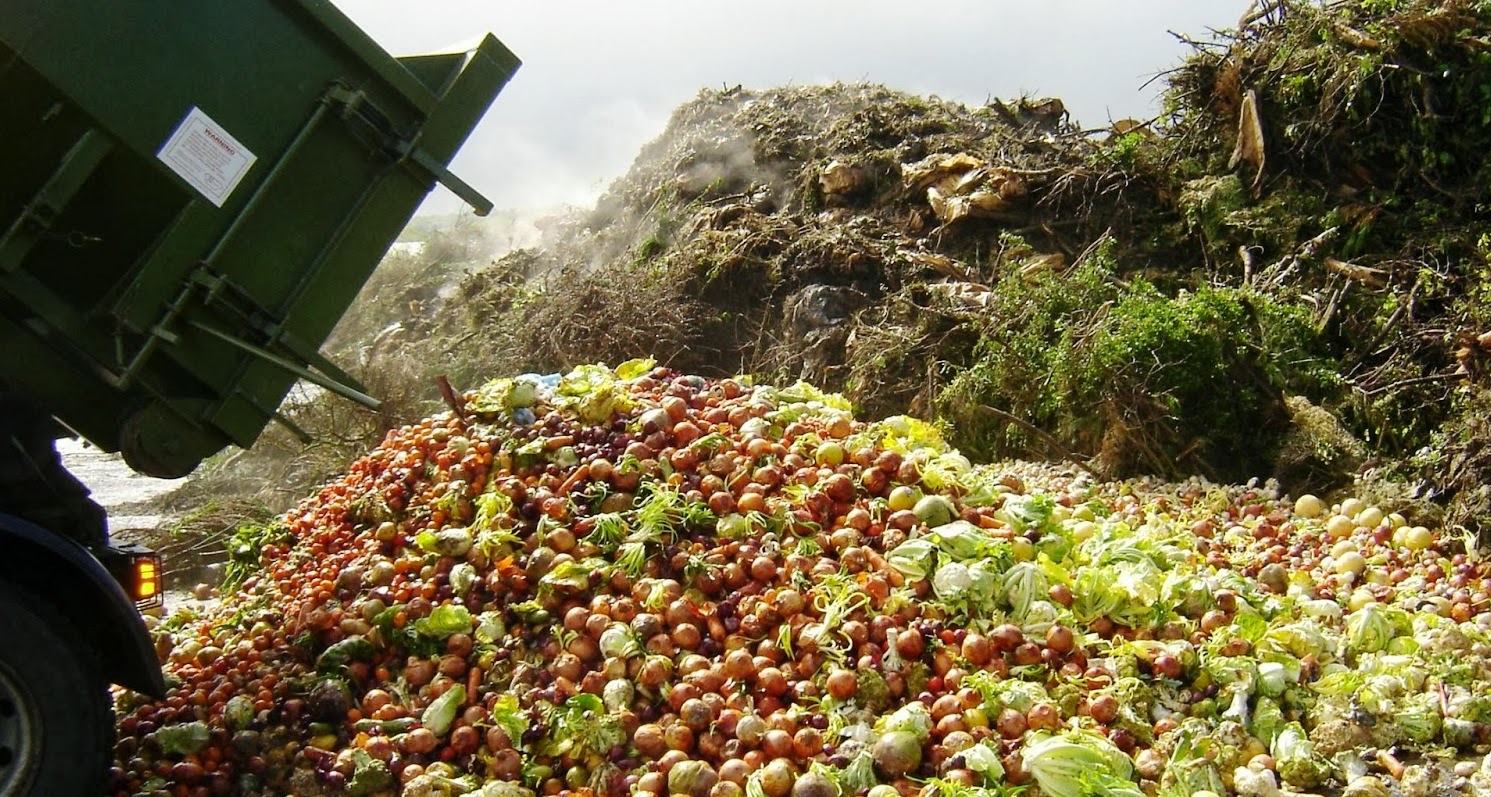On the fifth International Day of Awareness of Food Loss and Waste, the Waste Watcher Observatory found that 1,260 billion meals are thrown away globally each year, with 4.26 billion in Italy alone.
The observatory in particular registered a rise in waste among Italian families this year.
It calculated the average weight of meals as 500g estimated by the Food Waste Index Report 2024 of the UN Environment Programme, and considered the average increase of the Italian population in food poverty which had reached 6 million (10% of the population), according to figures provided by ISTAT and Catholic charity Caritas, estimating that approximately 4.2 million meals were wasted in Italy.
The meals could have fed nearly 4 million people, the observatory said.
According to a report, at every stage of the production chain, from the moment after harvest to consumption, a large part of food is wasted. In addition to consequences from a social point of view – millions of people in the world still suffer from hunger – this phenomenon has economic and environmental repercussions. The UN therefore decided in 2020 to dedicate September 29th to the fight against food waste to raise awareness among governments and private individuals on the issue. (1)
1. Food Loss and Food Waste
Certain data there is no information on how much food is thrown away each year, due to the lack of a food tracking system. In general, food surpluses are divided into two groups, based on when they occur.
Food loss (food loss) occurs from the moment after harvesting and before retail sale. At this stage, approximately 13% of food is lost each year. Of these, 32% consists of fruit and vegetables, i.e. the foods with the best nutritional properties. Most losses at this stage occur in developing countries.
Food waste (food waste) instead occurs in the final stages of the supply chain, i.e. in homes, catering services and retail sales. To better understand the extent of this waste, each of us produces on average 74 kg of food waste per year. Waste is concentrated above all in medium and high income regions and at domestic level: 570 million tonnes of food out of 913 is wasted at home, on average 74 kg per capita per year (2,3)
2. The true cost of food
Food waste it costs us about 750 billion dollars. Fruit and vegetable waste results in the loss of 912 trillion kilocalories and micronutrients. But in addition to material losses, further costs lurk.
2.1 Consequences on the environment
Wasting food it also means having wasted all the resources necessary to produce it:
. we lose 253 cubic km of drinking water,
. we occupy and work in vain 1,4 billion hectares of land (30% of the world’s agricultural surface) on which pesticides are often sprayed.
Furthermore, the greenhouse gas emissions linked to food losses are around 3,3 billion tonnes, to which must be added the emissions due to the fermentation of food in landfills. (4)
‘If food loss and waste were a country, it would be the third largest source of emissions of greenhouse gases(5)
2.2. Social consequences
Parallel to waste and food loss, hunger affected between 2022 and 691 million people in 783, still 122 million more people than pre-pandemic figures. Given that it risks worsening following the war in Ukraine and the effects on exports and raw material prices, as we have seen.
3. Commitments
To reduce losses and waste food requires commitment and collaboration at every level, from governments to companies and private individuals. National systems should include tools to monitor the flow of food and measure waste and losses so that timely interventions can be made. It is essential to guide the transition towards agri-food systems in favor of healthy diets and short supply chains.
3.1. The EU’s commitment
SDG 12,3 of the UN 2030 Agenda commits States to halve global food waste and loss per capita by 2030. (8) The European Union, in addition to adhering to the UN objectives, has adopted the waste framework directive which calls on Member States to reduce food losses and waste and encourages food donations.
An important step for reducing waste occurred in 2016 when the European Union launched a program for monitoring food waste. Only thanks to the collection of data is it possible to better understand the problem and the best actions to prevent it. (9)
3.2. Waste in Italy
In Italy food waste fell 12% in 2022 compared to the previous year. On average we threw away 27kg of food per person. For consumers, this waste is worth 6,5 billion euros to which must be added the 9 billion lost along the supply chains. However, even in Italy we have food security problems: over 2,6 million people do not have the opportunity to eat regularly.
Coop Italia’s commitment
A virtuous example among the companies is Coop Italia, the first Italian retailer, and one of the first 65 European operators, to have signed up to the EU Code of Conduct on responsible commercial and marketing practices in the food sector.
READ ALSO:
Bangladesh: UN, partners launch humanitarian appeal for flood victims
Coop Italy has adopted a sistem to formulate orders that allow you to avoid overstock and accumulate surpluses. Through the ‘Buon Fine’ project, Coop supermarkets donated 5.642 tonnes of food, capable of generating over 11 million meals, and for a value of 28 million euros. Consumers instead have the opportunity to purchase food products close to expiry with a discount of up to 50% thanks to the ‘Eat Me Now’ project.
What can consumers do?
Customers they play a fundamental role in reducing waste in the final phase of the supply chain. They are asked to make an effort to change their eating habits. Here are 15 tips that FAO offers consumers to prevent waste:
1. Adopt a healthier and more sustainable diet, for example by choosing less processed foods.
2. Buy only what you need. Planning and sticking to your shopping list can help.
3. Choose ugly fruit and vegetables, which are often thrown away because they do not meet aesthetic standards.
4. Store food wisely, keeping those with shorter expiration dates more visible.
5. Understand food labels. There is a big difference between an expiry date and ‘best before’.
6. Start small: Choose smaller portions or share large plates at a restaurant.
7. Love your leftovers – you can freeze them or use them for another meal.
8. Reuse your food waste, compost it.
9. Respect food, inform yourself about the production process.
10. Support local producers: Support small businesses in your community and fight pollution by limiting long product travel.
11. Preserve fish populations. Eat the most abundant species instead of overfished ones like cod and tuna.
12. Use less water.
13. Keep our lands and waters clean by properly managing the most hazardous waste, such as batteries, medicines and chemicals.
14. Eat more vegetable and vegetables.
15. Sharing is important. Donate the food that would be wasted thanks also to app. (11)
Conclusions
Our agri-food system it is not sustainable and will be even less so in 2050 if the population reaches 9,6 billion people. Then the natural resources of 3 planet Earths will be needed to guarantee a food model like the current one. A synergy between the various decision-making levels and research efforts is necessary. In this regard, the WIISE team participates in the project Wasteless within the Horizon Europe program for which it will develop a blockchain system to monitor food flows. (13)















